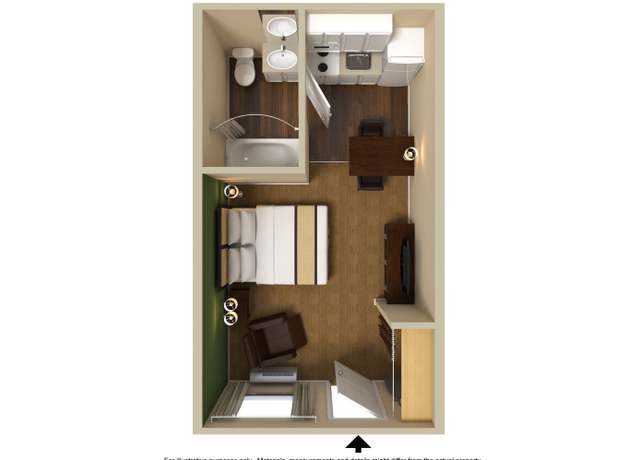Table of Content
Upon passing, you’ll receive a certificate of occupancy, which gives you the green light to move in. As you narrow down lots you like, you’ll want to loop in your architect and builder to make sure the lot you select fits the needs of your home’s floor plan and design. There are a lot of stages involved and lots of people you need to work with. However, as long as you take the time to fully understand the process, you won’t have any unnecessary delays and annoying inconveniences. The steps above should help you understand more about where to start when building a home. To come up with the perfect design for your home, you will need to work closely with the architect.
Trim will be installed around the windows and doors, along the floor, and if you choose, around the ceiling, too (that’s called crown molding and can add a sophisticated look to any room). Usually, insulation is applied to interior walls, the attic, basement, crawl space, and exterior walls (if it wasn’t applied before the sheathing). Roofers will install the flashings and asphalt shingles — but other materials may be used, such as clay or concrete tile, slate, metal, or wood.
Step 25: Flooring is laid throughout the house
Blanket insulation, which comes in batts or rolls, is typical in new home construction. So is loose-fill and blown-in insulation, which is made of fiberglass, cellulose, or mineral wool particles. Another insulation option, liquid foam, can be sprayed, foamed in place, injected, or poured. While it costs more than traditional batt insulation, liquid foam has twice the R-value per inch and can fill the smallest cavities, creating an effective air barrier. The national average to wire a new home can be anywhere from $2,500 to $4,000, and the electrical rough-in cost is around $3,000 to $8,000 for a 1,000-square-foot house.
This can make a homeownership journey a lot less stressful, and will save on costs paying for accommodation while waiting. Zbranek & Holt Custom homes offer all-inclusive design-build services to the clients with a fixed all-in-one cost before we ever break ground. So, we work with the client to understand every stage of the journey to complete the process of building their home delightful. Our timeless designs exceed all homeowner expectations and make the entire process as smooth and fast as possible. We always enjoy pushing the boundaries of what is attainable in homebuilding to get the most up-and-coming styles and traits. Our fifteenth and final step is the most exciting part of building a custom home.
Understanding the Stages of Building a Home
After you speak with a few custom home builders, you will become better at asking these questions. Excellent custom home builders are patient, expect to answer lots of questions and, often have a website or printed brochures to see their work. If your potential home builder has open houses, go to as many as possible. Good custom home builders usually are there to give tours and answer questions. Make sure to check with your builder on the status of your hardwood finishing process so you don’t accidentally damage them.

The cost of getting it wrong is steep and could prevent you from constructing a new home entirely. Make sure you have an experienced team around you that can handle the difficult work of building your house from scratch. With the excavation, foundation, and concrete work done, soon you will start to recognize your project as a house.
Think About Style and Design Preferences
How many employees did we have, how many trucks with our logo did we have on the road… But those stats don’t mean anything if we’re not profitable. We also understand that our clients have busy lives, and cannot afford to have the construction of their projects impact their lives. Even with this level of detail, it’s critical to note the costs above are strictly the costs to build a house, and exclude land acquisition and various vendor costs. The contractor builds vertical foundation walls resting on the footings, using either poured concrete or concrete cinder blocks. Other types of foundations are sometimes used, though they are rare.

This minimalist lifestyle is not for everyone, but it might just be perfect for you. When you hire Zbranek & Holt we dedicate all of our experience, resources, time, creativity and most importantly passion to making you a satisfied client. Painting — It takes more effort to paint the entire house than to paint one or two rooms, but this is a great step to take on yourself to save money. Lighting installation costs depend on the fixture type — ceiling lights, recessed lights, pendant lights and so on all have different labor costs. The national average for light fixture installation is $526, but costs can range from $150 to $2,500. Exterior finish grading ranges from around $970 to $3,000 depending on labor costs, materials available, and how much yard grading and filling is necessary.
Start your 2023 savings journey with Maya, the all-in-one digital bank app!
Just “how much” you’ll have to pony up for this depends on what you want and this is a good opportunity to save money on your build if you need to. That’s because a basic foundation will run you somewhere around $8,000 but that price can quickly go up. Once you’ve identified a budget, you can start looking for someone to build it.

As you’ve seen, your new home will be inspected periodically during the course of construction. In addition to mandated inspections for code compliance, your builder may conduct quality checks at critical points in the process. The idea is to catch as many potential problems as possible before construction is finished, though some issues may not surface until you’ve lived in the home for a period of time. The final step to bring it all together is applying the primer coat of paint, which varies depending on the finish. The average cost to paint a room is $350 to $850, but a large portion of this cost is labor.
Interest rates may be higher, but at least you'll have peace of mind knowing that you won't risk losing your home should your business go under. Alix is a staff writer for CNET Money where she focuses on real estate, housing and the mortgage industry. She previously reported on retirement and investing for Money.com and was a staff writer at Time magazine. She graduated from the Craig Newmark Graduate School of Journalism at CUNY and Villanova University. When not checking Twitter, Alix likes to hike, play tennis and watch her neighbors' dogs.

This is your chance to inspect each room and spot anything that needs to be touched-up or fixed. Don’t be afraid to point out something that doesn’t conform with the design drawings. Mistakes happen, and sometimes things are lost in translation when taking on building projects. If anything needs to be changed, your building team will go back and make changes. In the framing step, the bones of the home start to take shape. Framing includes the floor joists, subfloors, studs that form the walls and roof trusses.
The framing carpenters will arrive to put up the lumber framework for the floors, walls, and ceilings, and then move to the sheathing, siding, and roofing installation. In the space of a week or two, you may suddenly recognize this structure as being a house, complete with walls and a roof. No general contractor overseeing home construction comes cheap. Most general contractors charge between 10-percent to 20-percent of the overall cost of the home build, and this includes permits and materials. It's a fee that most amateur home-builders find well worthwhile, especially if they have any tried-and-failed experience at general contracting. Once construction is complete, a final inspection will be conducted by a local building official.

Prices can vary greatly on custom homes, and this will help you make difficult choices later on. Find information on the zoning, wetlands, septic connections, energy code, etc. For example, zoning can affect the required setback distance from the street, the height of your house, and whether or not you can build an in-law suite. What I’ve learned throughout this process is that the plans you have in your head aren’t necessarily how they’ll work out.
That became my life, and personally I wasn’t making any more money than I did when it was just me and one other employee. If you're handy around the house, you can save money by taking on some of the smaller projects yourself. Once the house is built, step in and do the landscaping, and build the patios and walkways. You can also paint the inside and outside of the house, and lay the flooring. Yet building your own home (meaning to hire a general contractor to complete a new-construction home) has an undeniable allure.

No comments:
Post a Comment